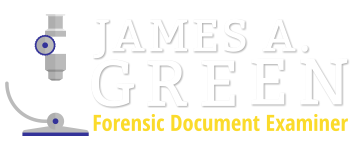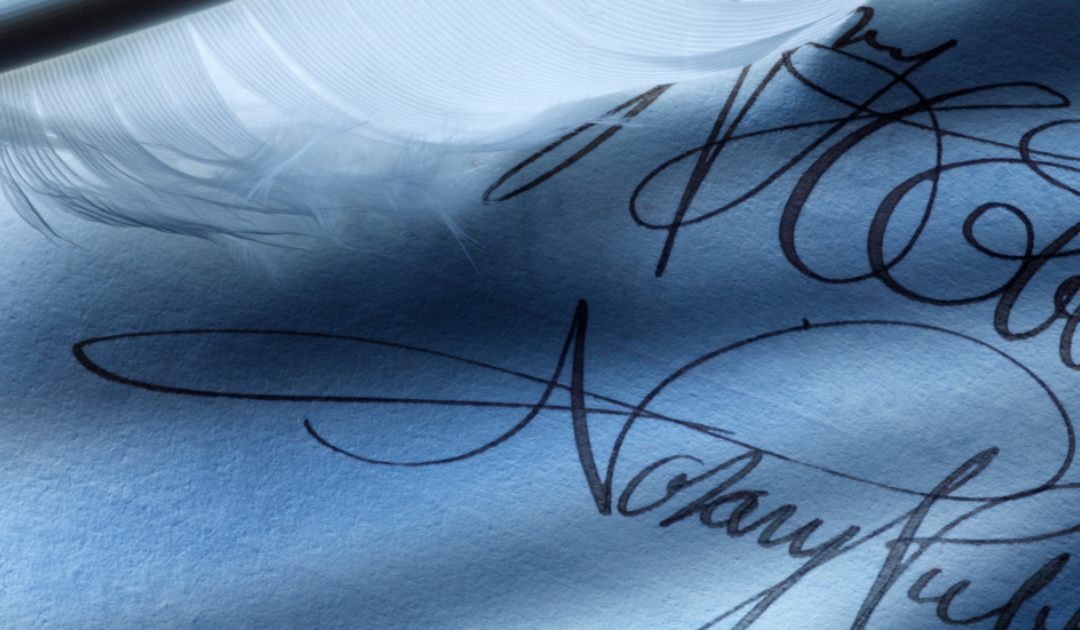Everyone has unique handwriting. Throughout our lives, especially when we’re learning how to write, we develop individualizing characteristics that make up our handwriting. While we normally have no reason to contemplate these characteristics; they are scrutinized during a signature analysis.
What is Signature Analysis?
Signature analysis is a discipline that falls under forensic science and calls for an expert to examine questioned documents. Forensic Document Examiners, or FDEs, compare signatures in question with several known signature samples. Individualizing characteristics of the signature will be examined for similarities and differences. The collective evidence will provide a foundation for the document examiner to express his or her opinion regarding the authenticity of the signature. The signature may be determined to be genuine or perhaps fabricated by a simulation, tracing, or cut-and-paste process.
A basic premise in handwriting comparisons is that no two people write exactly alike. Also, document examiners recognize a person cannot sign their signature precisely the same. Our motor skills do not allow us to reproduce our signatures with such machine-like alignment.
What a Document Examiner Looks For
When trying to learn if two samples of writing were written by the same person or not, the document examiner looks at specific features in both the questioned and known writing samples. Examples of features compared include the writing slant, the use (or lack of use) of connecting strokes between letters, approach and termination strokes, height relationships, design and positioning of “t-crossings” and “i-dots,” etc.
Letter form
Additional letter form observations include curvatures, the proportion of the loops or bowls, letter size, and so forth. The process includes both upper and lower-case letters. In some cases, a writer may change a letter form based on its position within a word, i.e., the beginning, middle, or end.
Writing fluency
Signatures written naturally will commonly exert more pen pressure on the downstrokes and less on the upstrokes. As a result, the strokes drawn downward are typically heavier (wider) than the lighter lines of the upward strokes. The fluent, smooth appearance of a signature is usually an indication of a genuine signature. If there is tremor (shakiness) present, it may provide evidence of the slow, drawn process by someone attempting to simulate or trace a signature.
Spacing considerations
Extended writing, such as that found in a holographic will, journal, or letter, will commonly have spacing patterns. The document examiner will consider the space used for indentations at the beginning of a paragraph, the amount of space left in the margin area, and the spacing between words and between lines.
The General Process of Analyzing Handwriting
The process of a signature analysis may be broken down into three distinct phases: Analysis, Comparison, and Evaluation (ACE.)
Analysis
The analysis stage reviews the questioned and known documents submitted for an examination. The adequacy of the writing samples is evaluated for their quantity and quality, and comparability (cursive to cursive, printed to printed.) Additionally, the dates of the known examples are noted to determine whether they are dated in proximity to the signature or writing. The closer the samples are dated, the better.
Comparing the Samples
The comparison stage is just that, the comparison of features between the questioned and known writing specimens. In addition to the individualizing features mentioned before, the document examiner will consider formatting styles, punctuation, and spelling.
Evaluation
After analyzing and comparing distinctive characteristics in the documents submitted for examination, it is time for a global evaluation. This final aspect of the ACE process is when an opinion is generated and shared with the client.
Signature comparisons by James A. Green
If you need a signature examination or have a different document issue, Mr. Green can help. He has over 30 years of experience and is certified by the American Board of Forensic Document Examiners. To receive information regarding a signature comparison, or to discuss another document concern, send an inquiry or call.

